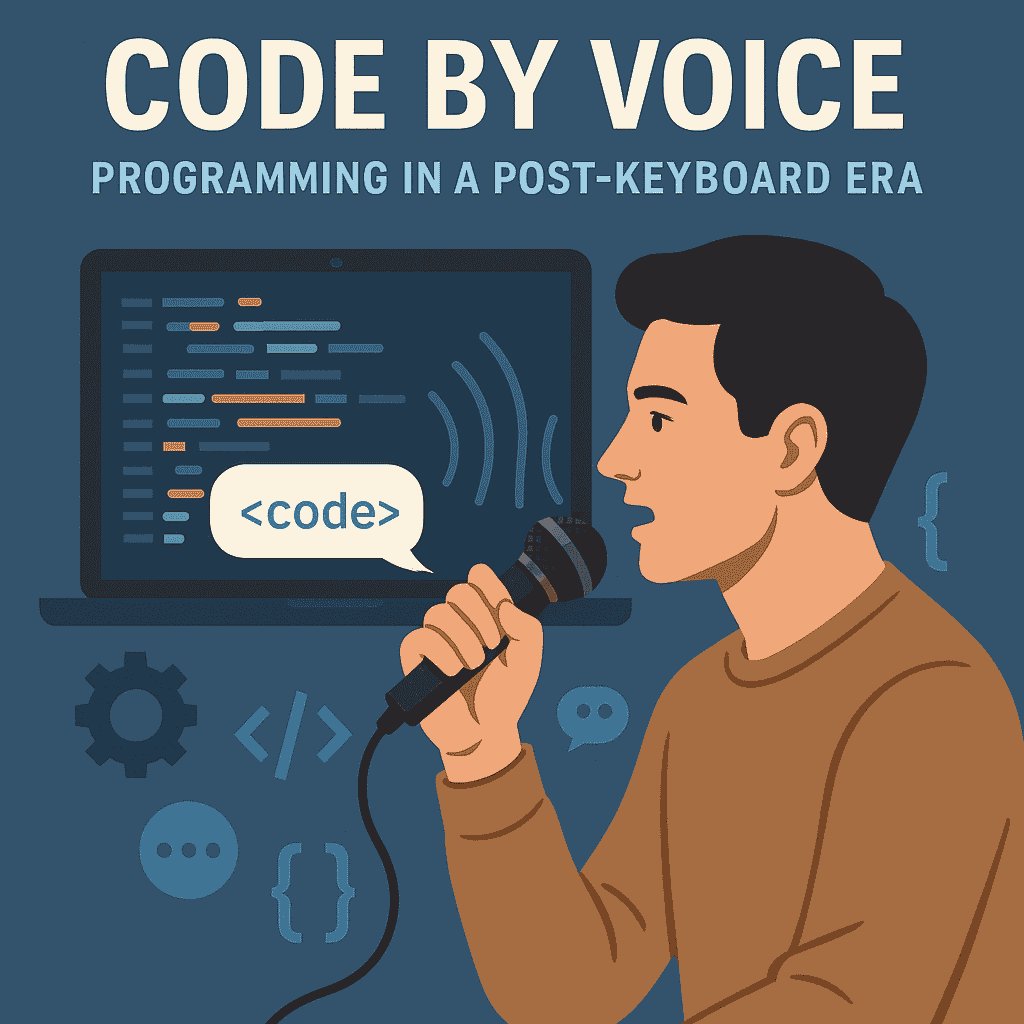
Introduction
Imagine you’re sipping your morning coffee, feet up, hands free—and you’re building an app by yourself. Not by typing, but by talking. Welcome to the world of voice-driven programming, where code flows from your mouth instead of your fingers.
Yes, we’re entering the post-keyboard era—a brave, sometimes hilarious,sometimes funny, new world where your next syntax error might be caused by a sneeze that the system interpreted as printf(“🤧”);.
🎤 What Is Voice-Driven Programming?
Voice-driven programming uses speech-to-text technology, combined with AI-powered assistants, to allow developers to write, debug, and navigate code using their voice.
This isn’t just about saying “open file” anymore. Thanks to tools like:
OpenAI Whisper (speech recognition)
Codex / GPT-4o (natural language to code)
Talon Voice, Serenade, and VoiceCode (developer-focused voice control),
you can now say things like:
🗣️ “Create a React component that renders a to-do list”
…and boom—your own app is halfway done.
🚀 Why Voice Coding Is Taking Off
Accessibility: Great for developers with RSI (Repetitive Strain Injury) or mobility issues.
Multitasking: Talk code while cooking, walking, or hiding from Jira tickets.
Natural Language Programming: GPT-based tools now understand your instructions.
Hands-Free Debugging: “Hey AI, find the bug in my function” is becoming a real command.
🤖 Interesting Fact: The First “Voice Coder” Was from the 90s
While it sounds new, the idea of voice coding dates back to Dragon NaturallySpeaking, first released in 1997. Of course, it thought “variable” was “very apple” half the time, but hey—vision counts.
😂 Funny Fact: When AI Mishears You…
Here are some real (and ridiculous) misinterpretations from early testers:
You Said It Heard Result
“Define a class called Cat” “Define a glass cold cap” Unexpected glassware in code.
“Initialize the array to zero” “Annihilate the area with cereal” Great if you’re building a breakfast-based RTS.
“Print hello world” “Print jello swirl” Now your app makes dessert.
🧠 The Tech Behind the Magic
Voice coding relies on three major technologies:
Speech Recognition (Whisper, DeepSpeech) – Converts your words into text.
Natural Language Understanding (GPT-4, Claude, etc.) – Understands intent, translates to code.
Command Mapping (Talon, VoiceCode) – Maps spoken phrases to shortcuts or actions in the IDE.
Together, they turn “Make a function that adds two numbers” into:
def add(a, b):
return a + b
Or… at least they try.
⚙️ Real Use Cases
Developers with RSI: Voice coding reduces strain on wrists and hands.
Low-code/no-code tools: Talk your way through app development.
Rapid prototyping: Dictate logic while thinking aloud—ideal for brainstorming.
⚠️ Challenges (aka Why Voice Coding Isn’t Fully Mainstream Yet)
Noise Sensitivity: A barking dog = unexpected while loop.
Precision: Typing i++ is easier than saying “increment i by one.”
Latency: Voice can still be slower for complex logic-heavy coding.
And let’s be honest—explaining recursion out loud feels like reading Shakespeare backward.
🔮 The Future: Voice + AI Agents = Hands-Free Software Development
We’re heading toward a world where you’ll say:
“Build me a blog with a contact form and deploy it to Netlify.”
And your AI pair programmer does it—no hands required.
Eventually, voice coding will blend with AI agents, augmented reality, and context-aware systems. Think Iron Man building apps instead of suits.
🧩 Final Thoughts
Voice programming isn’t here to replace keyboards entirely (yet). But it’s enhancing accessibility, changing how we interact with code, and making development more human—literally.
So next time your code breaks, maybe just talk it out.
It’s cheaper than therapy—and now it might actually fix your bugs.
🧠 TL;DR
Voice coding is real, and it’s growing fast.
Great for accessibility, prototyping, and multitasking.
Still has quirks, but tools like Whisper, Talon, and GPT are improving it rapidly.
Funny mishears are a bonus. “Print jello swirl” is iconic.
The future is voice + AI = natural, hands-free programming.
